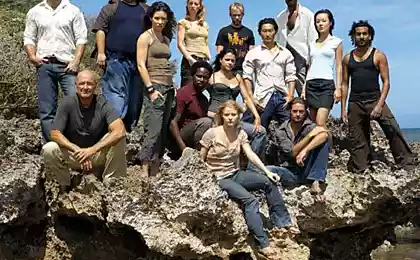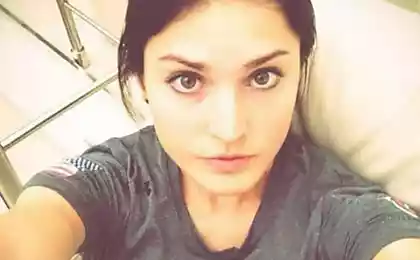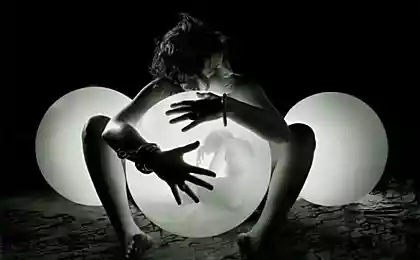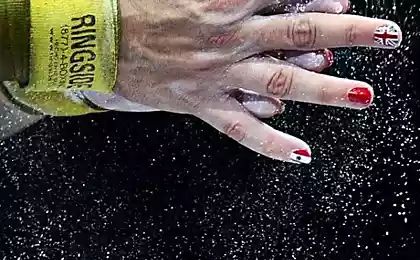530
Fitness from the past
It is not true that the fitness trend of the new time. The beauty of the human body and especially health is always appreciated. Canons and ideas about how to keep fit, has varied, but the mankind is, in fact, throughout its history.
Even in his current form, fitness in some countries there are already more than 100 years. So, the first exercise equipment remotely similar to modern ones, were born in the 19th century.

The first training simulators the Development of such devices even in 1850-e years was engaged in the Swedish physiotherapist Gustav Wilhelm Zander. However, his goal was to create devices for the rehabilitation of patients, and not just for the attainment of harmony. But his submission medico-mechanical therapy has gained the widest popularity, and in 1864, in Stockholm, opened the first sports Institute, the equipment of which consisted of 27 trainers, is now regarded as the "ancestors" of modern analogues.

And in 1877 began the industrial production of devices Zander that have proven effective in the treatment and rehabilitation of patients with injuries of musculoskeletal system. By the beginning of the new century, in Germany alone, worked for 79 Institutions Zander with his sports equipment.
At the turn of XIX and XX centuries zendelovska institutions mechano appeared in the Russian Empire in St. Petersburg, Moscow, Riga, Odessa, Nikolaev, Essentuki. In the last of the city's equipment placed in a specially constructed two-storey building in the city Park.
Device devices for Quite a long time machine Zehnder was perceived mainly as a medical, not a fitness device. They helped to improve the activity of the cardiovascular system, stimulate digestion and metabolism, strengthen muscle, and developed the spine and joints, accelerate the recovery of injured muscles. Zander has also designed machines that perform a variety of massage techniques and treatment of spinal curvature.
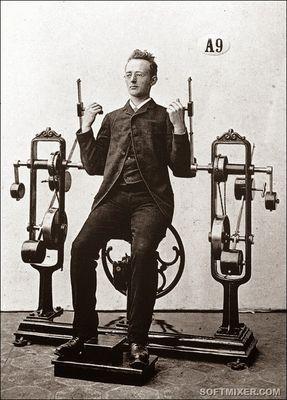
According to the principle of camerowska the different apparatuses were divided into passive and active. First, according to the encyclopedic dictionary of F. A. Brockhaus and I. A. Efron, "save the strength of the patient and at the same time without any on his part of the stress acted on the muscles mechanically by shaking, fainting, tremors, Ironing and vibrating motion of particular instruments."
In essence, the passive exercise equipment operated from an external source of energy, and actively demanded human muscular effort.
As it was, of Course, the simulators of the past visually different from today — how different the descriptions of devices, whose appearance is predicted in his science fiction novels Jules Verne. Most of his predictions did indeed translate into reality, but the appearance of the instrument, which he prophesied, is very different from the descriptions.
Good different apparatuses Gustav Zander, designed over a hundred years ago, were made of metal, high-quality wood and leather. Their details have been taken from familiar spheres of life. So, on the machine-the predecessor of the bike stood a real cavalry saddle, hand-stitched the saddler, and polished brass stirrups.
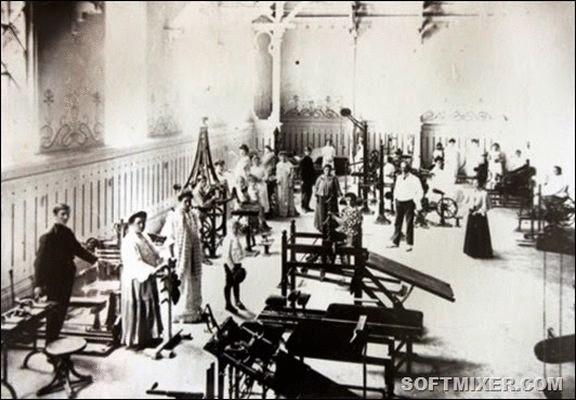
I wonder what were doing on a retro exercise equipment in casual wear — specialized sports simply did not exist. Moreover, in that era to put their body on display was not made, and the ancestors of the strokes and pitonyak went to the "hall" in full regalia...
Solid clad men and women spinning wheels and gears, rocking levers and rocker arms, stretching somewhere in the basement leading to the device — wide straps similar to the equipment for a railway levers-switches... of Course, the first "fitness centers" was markedly different from what we are accustomed to today.
But it was Gustav Wilhelm Zander a century and a half ago came up with the design and principles of operation, which is still based simulators we enjoy today.
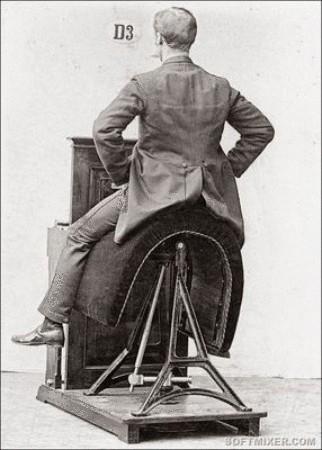




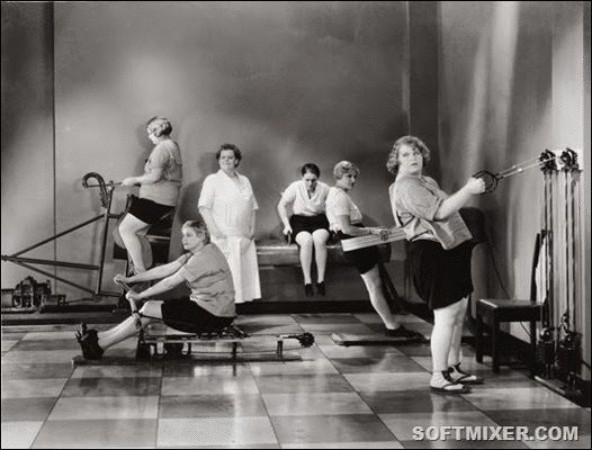
published
Source: fitfixed.com
Even in his current form, fitness in some countries there are already more than 100 years. So, the first exercise equipment remotely similar to modern ones, were born in the 19th century.

The first training simulators the Development of such devices even in 1850-e years was engaged in the Swedish physiotherapist Gustav Wilhelm Zander. However, his goal was to create devices for the rehabilitation of patients, and not just for the attainment of harmony. But his submission medico-mechanical therapy has gained the widest popularity, and in 1864, in Stockholm, opened the first sports Institute, the equipment of which consisted of 27 trainers, is now regarded as the "ancestors" of modern analogues.

And in 1877 began the industrial production of devices Zander that have proven effective in the treatment and rehabilitation of patients with injuries of musculoskeletal system. By the beginning of the new century, in Germany alone, worked for 79 Institutions Zander with his sports equipment.
At the turn of XIX and XX centuries zendelovska institutions mechano appeared in the Russian Empire in St. Petersburg, Moscow, Riga, Odessa, Nikolaev, Essentuki. In the last of the city's equipment placed in a specially constructed two-storey building in the city Park.
Device devices for Quite a long time machine Zehnder was perceived mainly as a medical, not a fitness device. They helped to improve the activity of the cardiovascular system, stimulate digestion and metabolism, strengthen muscle, and developed the spine and joints, accelerate the recovery of injured muscles. Zander has also designed machines that perform a variety of massage techniques and treatment of spinal curvature.

According to the principle of camerowska the different apparatuses were divided into passive and active. First, according to the encyclopedic dictionary of F. A. Brockhaus and I. A. Efron, "save the strength of the patient and at the same time without any on his part of the stress acted on the muscles mechanically by shaking, fainting, tremors, Ironing and vibrating motion of particular instruments."
In essence, the passive exercise equipment operated from an external source of energy, and actively demanded human muscular effort.
As it was, of Course, the simulators of the past visually different from today — how different the descriptions of devices, whose appearance is predicted in his science fiction novels Jules Verne. Most of his predictions did indeed translate into reality, but the appearance of the instrument, which he prophesied, is very different from the descriptions.
Good different apparatuses Gustav Zander, designed over a hundred years ago, were made of metal, high-quality wood and leather. Their details have been taken from familiar spheres of life. So, on the machine-the predecessor of the bike stood a real cavalry saddle, hand-stitched the saddler, and polished brass stirrups.

I wonder what were doing on a retro exercise equipment in casual wear — specialized sports simply did not exist. Moreover, in that era to put their body on display was not made, and the ancestors of the strokes and pitonyak went to the "hall" in full regalia...
Solid clad men and women spinning wheels and gears, rocking levers and rocker arms, stretching somewhere in the basement leading to the device — wide straps similar to the equipment for a railway levers-switches... of Course, the first "fitness centers" was markedly different from what we are accustomed to today.
But it was Gustav Wilhelm Zander a century and a half ago came up with the design and principles of operation, which is still based simulators we enjoy today.






published
Source: fitfixed.com
